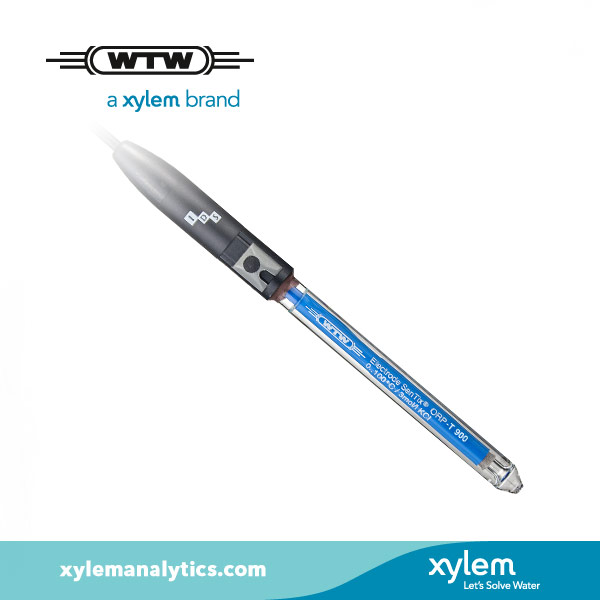
ORP measurements are one of the most difficult to interpret measurements of electrochemistry. It has something to do with electrical potentials - but what exactly? “ORP“ stands for oxidation/reduction potential. The sensor shows a similar design as a combined pH electrode - the difference is the sensitive part, which is a metal electrode instead of a glass membrane. Looking into the standards as DIN 38404-6:1984-05 *) reveals on a few pages basic information like design, handling and testing.
Principles of the measurement
In order to shed some light on this topic the following article contains some information on the functionality and the significance of this measurement. The principle of this measurement technique is the measurement of potentials which have their origin in the reaction of dissolved reactants exchanging electrodes on the surface of the metal electrode, the sensitive part of an ORP electrode. Unfortunately the metal also influences this reaction, because of the so-called exchange-current density. These metals are usually platinum or gold.
Each chemical reaction consists of two parts; an oxidation (which is in fact an electron donation) and a reduction (an uptake of electrons). Here we have a good example of an ORP reaction which takes place in a galvanic oxygen sensor:
2 Pb - > 2 Pb2+ + 4 e- Oxidation (donation of electrons)
O2 + 4 e- + 2 H2O - > 4 OH- Reduction (uptake of electrons)
_______________________________________________
2 Pb + O2 +2 H2O - > 2 Pb(OH)2 Total reaction
An exchange of charges on the metal of the ORP electrode leads to a change of the potential on this surface in comparison to the reference system of the electrode. This will be evaluated with a precise mV meter, usually a pH meter.
Practical pre-requisitions and examples
The crucial point of this measurement is that there have to be reactants in the water willing to exchange their electrons. This typically is not the case in most of the clean surface and ground waters, where measurements will not lead to stable readings. There will be exemptions when investigating waterbodies close to dumpsites with relevant pollutions but it is different when looking at technical applications.
Depending on the nature in an oxidising or reducing environment, the processes result in clearly detectable potentials. Typical applications are the disinfection of drinking water, or pool water with chlorine or today the seldom used method of the break point determination at nitrification/de-nitrification during waste-water treatment. Another application is the decontamination of cyanide containing waste waters e.g. from electro plating industry.
Basically it is important that the surface of the electrodes to be clean and free from oil and grease in order to have a smooth and undisturbed reaction. The standard gives some information for pre-treatment of the electrode depending on the application in oxidising or reducing environments which could lead to an improvement of the signal quality. The reason is that even precious metals (particularly platinum) tend to oxidise and change their surface properties.
Testing the electrode
These electrodes will be tested in a special solution of a well-defined mixture of potassium ferro cyanide (II) and potassium ferro cyanide (III). Depending on temperature it gives listed reference values. This is not a classical standard solution, it has also nothing to do with a calibration and adjustment of the electrode. There is also no temperature compensation as we know this from pH because ORP shows an unpredictable behaviour. Nevertheless it is absolutely necessary to document the temperature.
Conclusions
In summary, ORP measurements only deliver conclusions if the sample contains reactants. Otherwise it is simply a waste of time and money.
*)(DIN 38404-6 1984 Edition, May 1984 German standard methods for the examination of water, waste water and sludge; physical and physico-chemical parameters (group C); determination of the oxidation reduction (redox) potential (C 6))